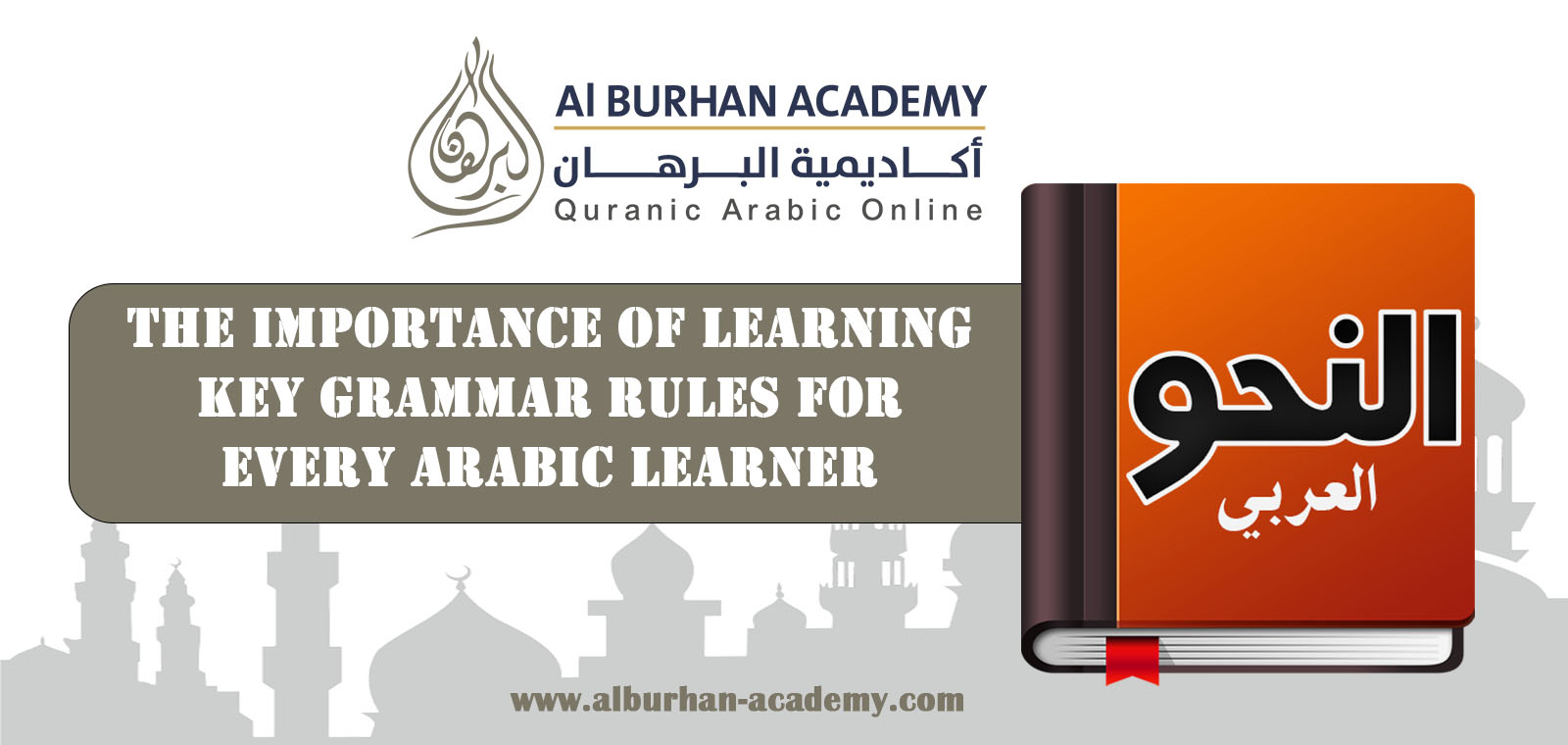
Grammar rules are one of the fundamental aspects that every Arabic learner must know, as they significantly enhance the ability to express oneself correctly and meaningfully. Mastery of these rules helps learners avoid linguistic errors and improves their comprehension and interpretation of Arabic texts. In this article, we will highlight the most important grammar rules that every learner should be familiar with.
1. Subject and Predicate
The subject (مبتدأ) and predicate (خبر) form the foundation of nominal sentences. The subject is the element that the sentence begins with, while the predicate completes the meaning and clarifies the subject. Learners must know how to construct nominal sentences properly, such as: “The book is useful,” where “the book” is the subject and “useful” is the predicate.
2. Subject and Object (فاعل ومفعول به)
The subject (فاعل) is the one who performs the action in the sentence, while the object (مفعول به) is the one on whom the action is performed. In a verbal sentence, the subject comes before the object. For example: “I read the book,” where “read” is the verb, “the book” is the object, and “I” is the subject, which is implied.
3. Tamyiz (تمييز)
Tamyiz is a noun used to clarify something that is ambiguous in the sentence. For example, “I ate three books,” where “three” is the tamyiz that clarifies the number of books. The tamyiz must agree in case with the word it explains.
4. Parenthetical Phrases (جمل اعتراضية)
Parenthetical phrases are inserted between parts of a sentence to explain or provide additional information. These sentences do not affect the main structure of the sentence. For example: “We went to school, and thank God, we arrived on time.”
5. Negation Tools (أدوات النفي)
Negation tools are used to cancel or deny the occurrence of the action or condition in the sentence. The most common negation tools are “لا”, “لم”, “ما”, and “لن”, each used in specific contexts depending on the type of sentence. For example: “I did not go to the market” or “I do not want to go.”
6. Emphasis (توكيد)
Emphasis clarifies the meaning of a sentence using an expression that reinforces the idea. Common emphasis tools include “إنَّ” and “أنَّ”, as well as repetition or using “لام” to emphasize a sentence. For example: “Indeed, God is forgiving and merciful.”
7. Conjunction (عطف)
Conjunction is the process of connecting two or more sentences or phrases using conjunction words like “و”, “أو”, “لكن”. Conjunction helps in combining ideas so that the sentence becomes clearer and more cohesive. For example: “I read the book and understood the lesson,” where “and” is the conjunction.
In conclusion, grammar rules are essential skills every learner must master to enhance their Arabic language abilities. By learning the subject and predicate, subject and object, tamyiz, parenthetical phrases, negation tools, emphasis, and conjunction, learners can greatly improve their linguistic skills. Al-Burhan Academy aims to offer educational courses that help students understand and apply these rules correctly in daily communication and writing.





No comment yet, add your voice below!